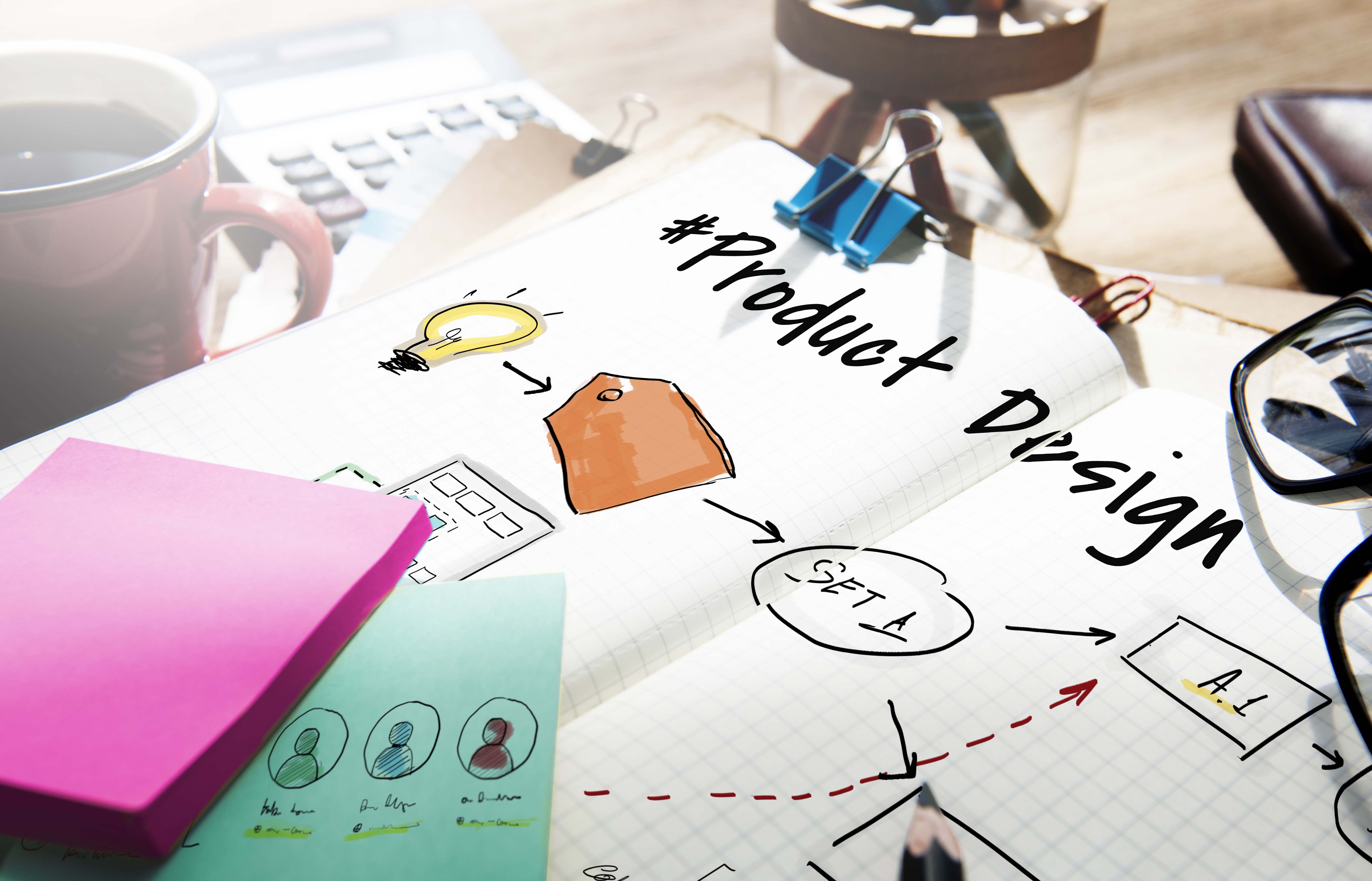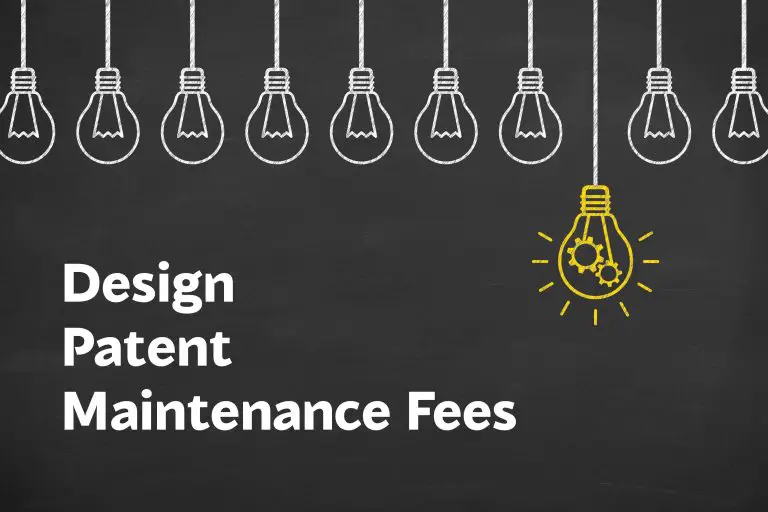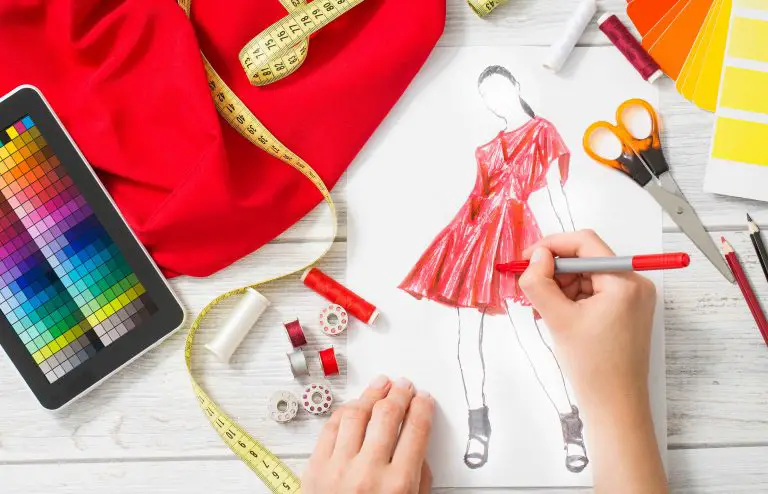How to Patent a Design?
If you have a design that’s worth protecting, you’re probably wondering how you can protect your design with a design patent? The USPTO allows designers to protect the ornamental appearance that’s applied to an article of manufacture. Said differently, the patent office allows designers to patent the unique look of an object with a design patent.
Patenting a design allows the designer to claim the original design as their own, giving them the ability to use, make, sell, and profit from the design for a limited period of time. Design patents last for 15 years from the date the USPTO grants the design patent application. Design patents are much cheaper to obtain than utility patents. So, how exactly does an individual patent their design?
How to Patent a Design?
To patent a design, an individual must follow the following steps:
- Your Design Must Qualify for a Design Patent
Design patents, unlike utility patent, do not protect the invention itself, but rather the way the invention looks. To patent a design, the design must be original and it must be ornamental (for decoration only).
For example, if you want to patent a pair of nail clippers, a design patent will not protect the way the nail clipper functions, rather it will protect the unique shape or design of the nail clippers. - Perform a Patent Search
Designers should perform a patent search to determine if a similar design has already been patented at the USPTO. If you find designs that are similar to yours, describe how your design differs from the design that’s already been patented. - Consult with a Patent Attorney
Consulting with an experienced patent is a great way to patent your invention. Patent attorneys are knowledgeable and experienced in matters that relate with patenting designs. They can research your design patent and prepare the design patent application on your behalf. - Prepare Your Design Patent Application
When preparing your patent application, make sure that you comply with all of the requirements and rules set forth by the patent office. Making even seemingly minor mistakes can get your application rejected.
The patent office allows one design per application, so describe the design your claiming with as much detail as possible. Also, include professional drawings of your design and give a written description of each drawing. Also, if you need to get an idea as to what your application should look like, you can look at patents that are similar to yours to see how they’ve described their design. - File Your Application with the USPTO
Once you or your attorney have prepared the patent application, it’s time to file it with the USPTO. Micro entities will have to pay a $50 filing fee, small entities will have to pay a $100 filing fee, and large entities will have to pay a $200 filing fee. - Communicate with the Patent Examiner
The patent office will often communicate with you or your patent attorney regarding the status of your design patent application. Do not ignore communications from the USPTO. If they request something, make sure your attorney responds with the appropriate information.
If the patent examiner allows your application, follow the process and necessary steps to complete your application. Always have your patent application number, filing date, and application title ready when communicating with the USPTO.
If the USPTO for some reason rejects your design patent application, they will often give you a chance to correct any deficiencies or errors in your application. Of course, if you have to modify your application, you may have to have your attorney respond on your behalf and this will cost you money.
Design Patent Application Contents
Every design patent application must include the following elements:
- Abstract. You should include an abstract that gives a brief description of the design and intended use of the object to witch your design is attached. Your abstract should not be more than two to three sentences long.
- Title. The title for your design should be specific and clearly identify the design that you’re seeking to patent. Do not use trademarked or marketing terms in the title of your design.
- Claim. Each design application is only permitted to one claimed design. You cannot patent more than one design per design patent application.
- Cross Referencing. If you have filed a utility patent application for the object your seeking a design patent for, you should cross-reference the two application by including the utility patent application number and filing date on your design patent application.
- Drawings. You must submit drawings of your design that illustrate the design you’re seeking to protect. You should include a 3D drawing of your design, as well as drawings of the front, back, right, left, top, and bottom sides of the object to witch your design is attached. If you cannot produce these drawings on your own, you can seek the help of a professional artist that specializes in patent drawings, they typically charge between $50 to $100 per drawing.
- Describe Your Drawings. You should include a short description for every drawing you’re attaching to your design patent application.
- Describe the Design. In addition to including illustrations, the patent office gives you the option to describe your design using words. The illustrations are the most important part of your application, but if you feel the need to describe your design in writing, the patent office allows you to do so.
- Oath. Every design patent application includes an oath where you declare that you are indeed the inventor for the design you’re seeking to protect with a design patent.
- Pay USPTO Fees. Once you have prepared your patent application, you should file it with the patent office and pay the appropriate fees.
Why is Patenting Your Design Important?
Patenting your design is important because it allows designers to protect their intellectual property from being copied and sold by competitors. Design patents grant designers the right to restrict others from using, making, selling, or importing the patented design for a limited period of time, usually 15 years from the date the USPTO grants the design patent.
During these 15 years, the designer will be able to profit from his design by selling the object holding the design or licensing its use to third parties. Some designs are very important because it’s often the first thing that people notice when they see an object. Design patents are often sought to protect the designs of jewelry, footwear, clothing, furniture, and product packaging.
How Much Does it Cost to Patent a Design?
To protect your invention with a design patent, you should expect the following costs:
- Design Patent Application Filing Fees.
For micro entities the filing fee is $50, for small entities the filing fee is $100, and for large entities the filing fee is $200. - Design Patent Search Fees.
The USPTO charges a Design Search Fee of $40 for micro entities, $80 for small entities, and $160 for large entities. - Design Patent Examination Fees.
The USPTO charges a design patent examination fee of $150 for micro entities, $300 for small entities, and $600 for large entities. - Lawyer Fees.
If you need the assistance of a patent lawyer to prepare and file your application for you, you should expect to pay between $2,500 and $3,500 in attorneys fees. The fees you pay for an attorney to prepare your design patent application depend on the complexity of the design you’re seeking to patent. Note that if you’re attorney has to communicate with the patent office or modify your application, this will add more expenses to your bill.
Do you Have to Pay Any Fees After Applying to Patent a Design?
Unfortunately, yes you do have to pay fees after applying for a design patent. If the USPTO grants your design patent, you will have to pay the patent office a Design Patent Issuance Fee. The fee you will pay depends on the size of your entity. Micro entities pay $175, small entities pay $350, and large entities pay $700.
How Long Does it Take to Get a Design Patent?
As of May 2019, the USPTO states that it takes 20.5 months to get a design patent approved from the date you filed your design patent application. This time-frame takes into account the average time that it takes a design patent applicant to reply to any inquiries from the patent office.
Also, the USPTO states that it takes 13.8 months for the First Office Action to be mailed to you. A First Office Action is sent to applicants for patents once the patent examiner examines your design patent application.
Can You Patent a Concept?
The short answer is no, you cannot patent a concept or a mere idea. The patent office will not allow you to protect an idea or concept with any form of intellectual property protection. That said, an idea are still valuable as an essential first step towards inventing something, but mere idea or concept cannot on it’s own be patented. To get a patent, there has to be some physical manifestation of the idea for you to be able to patent it.
Reasons to Get a Design Patent
If you have a design that’s new and unique, here are some reasons why you should get a design patent:
- Design patents are quite easy to get, assuming you’ve properly prepared and file your design patent application
- They are less expensive to get than utility patents
- They are great to have, especially if you have a utility patent protecting the functional aspect of your invention, adding design patent protection gives you complete intellectual property protection of your invention.
Reasons to Not Get a Design Patent
You should not get a design patent If any of the following situations apply to you:
- Some else is already using the design you want to patent
- Someone else has already patented the design you want to patent
- You are not the person who invented (created) the design
- The design you’re seeking to patent is not new and unique
What is an Example of a Design Patent?
Here is an example of a design patent that protects an old fashioned jewelry box that was filed on September 26, 2006 with the USPTO:



Are Design Patents Worth It?
Design patents are worth it if you have a design that’s worth protecting. Designs are worth protecting if they are commercially viable, meaning you can commercialize them and profit from them by selling the object with patented design or licensing its use to others.
If you have a design that you’ve patented, you will be able to use, sell, and license the design for 15 years from the date your design patented is granted. After the 15 year period, the design will become part of the public domain and anyone will be able to use the design without the patent holder’s express permission.
What’s the Difference Between a Utility Patent and a Design Patent?
Utility patents are used to protect inventions, machines, processes, and software, whereas design patents are used to protect aesthetics and ornamental appearance of an object.
Deadline to Patent a Design
The USPTO does not impose a deadline to file a design patent application. However, if you have a new and unique design that’s worth protecting, you should file a design patent application as soon as you can to avoid someone else patenting the same design.
Also, the patent office currently needs 20.5 months to approve design patent applications, so the sooner you apply for a design patent, the sooner you’ll be able to enforce your rights under the patent.
What is the Cheapest Way to Get a Design Patent?
The cheapest way to get a design patent is to file the patent application by yourself. If you’re comfortable enough with patent law to draft and file your design patent application, you’re free to do so as the patent office does not require you to have an attorney.
That said, mistakes can be costly, especially if you’ve taken a significant step towards patenting your design and the USPTO rejects your application, you’ll have to hire an attorney to go through everything you’ve already done and then make changes to the filed application.
Hiring an attorney to prepare and file your design patent application may seem costly at the beginning, costing between $2,500 and $3,500, but it may save you money on the long run. Patent attorneys are trained and have experience filing design patents, making them less likely to make mistakes that an average person may make while preparing the application.
Tips to Get a Design Patent
The most important part of getting a design patent is properly drafting and preparing your design patent application. To get a design patent, you will need to show that the design you’re seeking to protect qualifies for design patent protection.
Many times, sneaky inventors trying to obtain design patents on the actual invention itself and not the design, this is not allowed at the USPTO. Design patents were created to protect things like the appearance, aesthetics, or ornamental aspects of an object and not the function itself.
To get a patent, you’ll have to complete the design patent application data sheet, which requires you to list basic information about your design, including a description of the design and what your design was created for. Also, make sure to follow the formatting guidelines set forth by the USPTO when preparing your patent application, even seemingly minor mistakes can get your application rejected, costing you time and money you may not have.
Do you Need Drawings to Patent a Design?
The short answer is: yes, you need to include drawings to patent a design. The USPTO requires that you include the following drawings of your design:
- Front
- Back
- Right Side
- Left Side
- Top
- Bottom
- Perspective (while not required, it’s important)
The patent office states that the drawings should be illustrated in black and white line drawings. Drawings must have proper surface shading and they must use broken lines where appropriate to indicate that the subject matter is not a part of the design a designer is claiming in their patent application.
If you’re like us and you can’t draw the required figures, you can hire a professional patent drawer to draw them for you. We’ve seen such artists charge $50 to $100 per drawing, so expect to spend $600 for these drawings.
How Many Designs Can You Patent?
You can patent as many design as you wish, however and this a big however, you can only patent one design per design patent application, meaning you cannot claim more than one design in your application. If you have other designs that you want to protect, you can do so by filing a separate patent application for them.
Claiming more than one design in your patent application can delay the design patent grant. Design patent applications have a high allowance rate of 84%, meaning that 84% of all patent applications are approved.
This suggests that there is a strong probability that a design patent application claiming a single embodiment design will proceeding from filing to allowance without the applicant ever having to receive an patent office action.
How Many Design Patents Can the Same Person Apply For?
Patent law does not limit the number of design patents that an applicant can apply for or have. Therefore, an individual can file for and have as many design patents as they wish. However, if you have different designs that you want to protect, just remember that you’ll need to file a separate patent application for each unique design.
Design Patent Publication
Unlike utility patent applications which must all be published and made publicly available within 18 months after an inventor files their utility patent application, design patent applications are keep secret at the USPTO until the patent office issues the design patent. Once the patent office issues the design patent, the design patent application is made publicly available. Some believe that keeping design patent applications secret creates a problem for those who want to patent designs that are similar to the one that’s secretly pending at the USPTO.
How Long Does a Patent on a Design Last?
According to the USPTO, design patents in the U.S last for 15 years from the date the patent office grants an inventors design patent. Design patent term is different from utility patents, which last for 20 years from the date an inventor files his utility patent application. The design patent term was recently extended from 14 years to 15 years from the date a design patent application is granted.
What Should you Do if the USPTO Rejects Your Patent Application?
If the USPTO rejects your design patent application, you or your attorney should request that the USPTO reconsider your patent application. You can argue that they came to the wrong conclusion and that they should grant your application.
Many times, the patent examiner will ask you to reply to the rejection of your application because your design is patentable, but you need to make a few changes to the application. If for some reason you disagree with the patent examiner, you can reply to them but make sure that you are specific in your answer and/or argument.
Also, make sure that you pay attention to the dates in the letter and that you reply within the allotted time-frame. Missing deadlines can cost you both time and money. Additionally, if you have an attorney helping you out with your application, he may charge you for communicating with the patent office on your behalf.
That said, when you mail any documents to the patent office, make sure that you use certified mail so that you have delivery confirmation and proof of mailing. Delivery confirmation can be a life saver if you sent something to the patent office and for some reason it gets lost or misplaced, you will have proof that you replied.
Can you Patent a Design Worldwide?
Up until now, we have covered everything on how to patent a design in the United States, so if you have a design and you’re from the U.S, can you patent your design abroad? The short answer is yes, and it’s easier than ever today.
Today, if you want to patent your design worldwide, you can do so by submitting a single application to the WIPO (World Intellectual Property Organization). Previously, if you wanted to protect your patent overseas, you had to file a patent in every country that you wanted to protect your invention.
Thanks to WIPO, you only need to submit one patent application and if approved, your patent will be protected worldwide. To obtain a worldwide patent on your design, you pay a single fee and you need to file the application in one language, if approved, your patent will be worldwide.
It’s a fairly long process to fill out the application, but the WIPO website will walk you through it step-by-step. If approved, you’ll get worldwide protection. This worldwide process is not only available for design patents, but also includes trademarks and inventions.
How to Patent a Design Concluded
This article thoroughly discussed all of the steps that you will need to take to patent your design. We also broke down the fees that you will need to pay to file your application, attorneys’ fees, and additional fees that you will have to pay after filing your design patent application. Basically, we tried to cover everything involved in how to get a patent. If you have any general questions or comments, please feel free to leave them in the comments section below.







